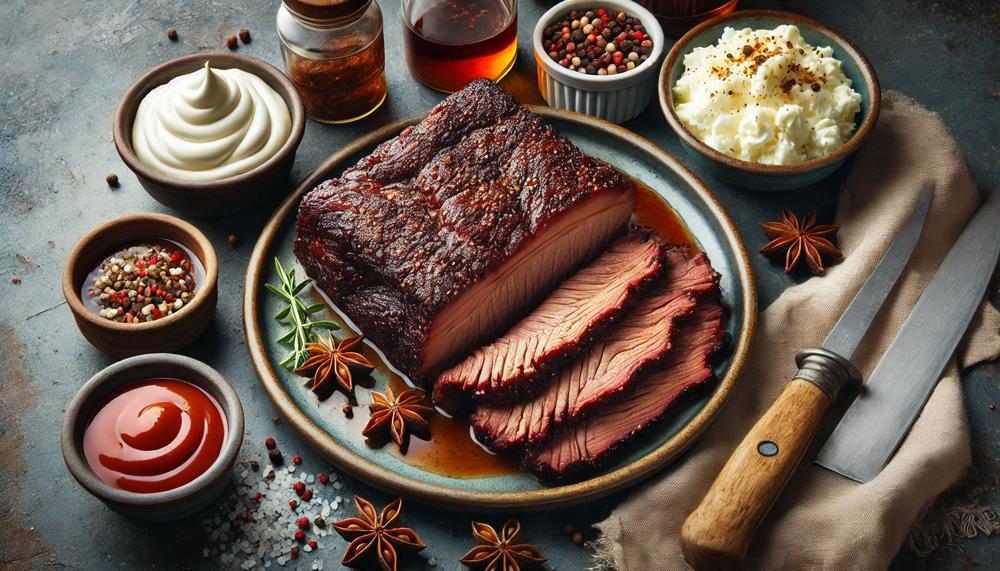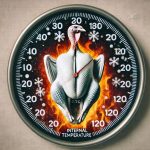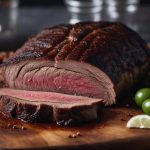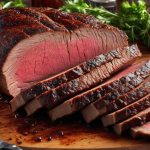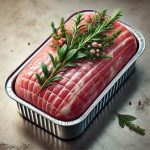Yes, brisket finishing early is a common issue that many BBQ enthusiasts encounter. Cooking a brisket can be unpredictable due to various factors like meat thickness, smoker temperature, and even weather conditions. If your brisket finishes earlier than expected, don’t worry. There are several practical steps you can take to ensure it remains juicy and flavorful until serving time.
Managing an early-done brisket is all about keeping it at the right temperature and maintaining its moisture. Here’s how to handle this situation effectively:
- Wrap and Hold: Once your brisket is done, wrap it tightly in aluminum foil, then in a towel, and place it in a cooler (faux Cambro) to keep it warm for several hours without overcooking.
- Use a Low Oven: Alternatively, you can keep the brisket in a low oven set at about 170°F (77°C). Adding a bit of beef stock or water can help retain moisture.
- Regular Temperature Checks: Monitor the brisket’s internal temperature regularly to ensure it stays within the safe range, ideally around 150-160°F (65-71°C).
- The Texas Crutch: If your brisket seems to stall at around 150°F, you can wrap it in foil to speed up the cooking process, but be aware that this may soften the bark.
- Create Burnt Ends: If the point end of the brisket has gone past 210°F, you can make burnt ends by cutting it into cubes, tossing in BBQ sauce, and cooking further for an hour or two.
Key Takeaways:
- Wrap and hold the brisket in a faux Cambro or a low oven.
- Regularly check the brisket’s temperature to avoid overcooking.
- Use the Texas crutch to manage cooking stalls.
- Convert overcooked portions into delicious burnt ends.
Handling an early-finished brisket properly ensures that your hard work results in a delicious and memorable meal. Follow these steps to keep your brisket perfect until it’s time to serve.
Contents
How To Keep Brisket Warm When It’s Done Too Early
Keeping your brisket warm if it finishes cooking ahead of schedule requires careful heat management to maintain its moisture and flavor until serving.
Rest in a Low Oven:
- Preheat your oven to a low temperature, around 95°C (200°F). Wrap the brisket in foil to help retain moisture and place it in a baking dish with a couple of inches of beef stock or water. This setup not only keeps the brisket warm but also enhances its juiciness.
Use a Faux Cambro:
- A faux Cambro can be improvised with a cooler. Wrap the brisket in foil, then in a large towel, and place it inside the cooler. This method can keep the brisket warm for several hours without any significant drop in temperature.
Regular Temperature Checks:
- Periodically check the internal temperature of the brisket with a meat thermometer to ensure it remains between 60°C and 70°C (140°F to 160°F). This range is ideal to keep the brisket safe for consumption and perfectly warm.
When Is Brisket Considered Done?
This question, crucial for any grilling aficionado, revolves around ensuring the brisket emerges not only visually appealing but also delectably tender. Achieving the epitome of brisket perfection involves a symphony of techniques that signify its readiness.
Brisket reaches its prime when it meets several key conditions, which pitmasters and home cooks alike should note. The most definitive is the internal temperature. A thermometer plunged into the thickest part of the brisket should read between 195°F to 203°F. This range is the sweet spot where collagen breaks down into gelatin, transforming tough fibers into succulent bites.
In addition to temperature checks, tactile tests provide hands-on confirmation of doneness:
- The Fork Test: Sliding a fork into the brisket should meet little resistance.
- The Toothpick Test: Much like testing a cake, a toothpick inserted into the brisket should slide in and out with ease.
- The Feel Test: When lifted, the brisket should wobble akin to gelatin, indicating it has reached the desired tenderness.
After reaching the desired internal temperature and passing the physical tests, it’s imperative to rest the brisket. This resting period allows the juices to redistribute throughout the meat, ensuring each slice is moist and flavorful.
For clarity, here’s a table summarizing the key points to determine when brisket is considered done:
| Test | Description | Target Result |
| Internal Temperature | Use a thermometer to check the temperature at the thickest part. | 195°F to 203°F |
| Fork Test | Insert a fork into the meat. | Fork slides through easily. |
| Toothpick Test | Insert a toothpick into the meat. | Toothpick slides in and out easily. |
| Feel Test | Lift the brisket to feel its consistency. | Feels wobbly like gelatin. |
These methods, gleaned from seasoned pitmasters, ensure that your brisket is not just cooked but is cooked to perfection. Remember, the journey to perfect brisket is a blend of art and science, seasoned liberally with patience and passion.
Can You Leave A Cooked Brisket Out Overnight?
The simple answer is no, you should not leave a cooked brisket out overnight. Cooked meat, including brisket, should not be left at room temperature for more than two hours, as per food safety guidelines. Leaving cooked brisket out for an extended period can allow harmful bacteria to proliferate, increasing the risk of foodborne illness.
Here’s a breakdown of why it’s risky and what you should do instead:
- Temperature Danger Zone: Cooked foods should not stay within the temperature range of 40°F to 140°F for more than two hours. This range is considered the “Danger Zone” because it’s the perfect environment for bacteria growth.
- Bacteria Growth: Bacteria such as Salmonella and E. coli can grow rapidly at room temperature. This growth can make the food unsafe to eat, even if it is later reheated to kill the bacteria.
- Proper Storage: Instead of leaving brisket out, it should be refrigerated within two hours of cooking. Slice the brisket and store it in shallow, covered containers to cool it quickly and evenly.
- Reheating: When ready to eat, reheat the brisket to an internal temperature of at least 165°F to ensure any lingering bacteria are destroyed.
Table: Guidelines for Handling Cooked Brisket
| Action | Temperature | Time Limit |
| Store cooked brisket | Below 40°F | Within 2 hours of cooking |
| Reheat brisket | At least 165°F | Until hot throughout |
| Avoid temperature zone | 40°F to 140°F | Do not exceed 2 hours |
How To Stop Brisket Cooking Too Quickly
| Method | Description | Details |
| Cook to Tenderness | Cook brisket until tender, not by time or temperature. | Aim for 200-205°F internal temperature for optimal tenderness. |
| Spritzing | Regularly spritz brisket to slow cooking and enhance flavor. | Spritz every 45-60 minutes during smoking. |
| Temperature Control | Maintain consistent low heat (225°F) for even cooking. | Prevents brisket from drying out and ensures even cooking. |
| Stall Management | Wrap brisket in butcher’s paper or foil to manage stall. | Helps maintain moisture without speeding up cooking. |
| Resting Techniques | Rest brisket in a cooler or warm oven post-cooking. | Keeps meat moist and flavorful until ready to serve. |
| Continuous Learning | Improve skills through each cooking experience. | Adapt methods based on outcomes to refine barbecue skills. |
Barbecue Tips and Guides – Kept Simple
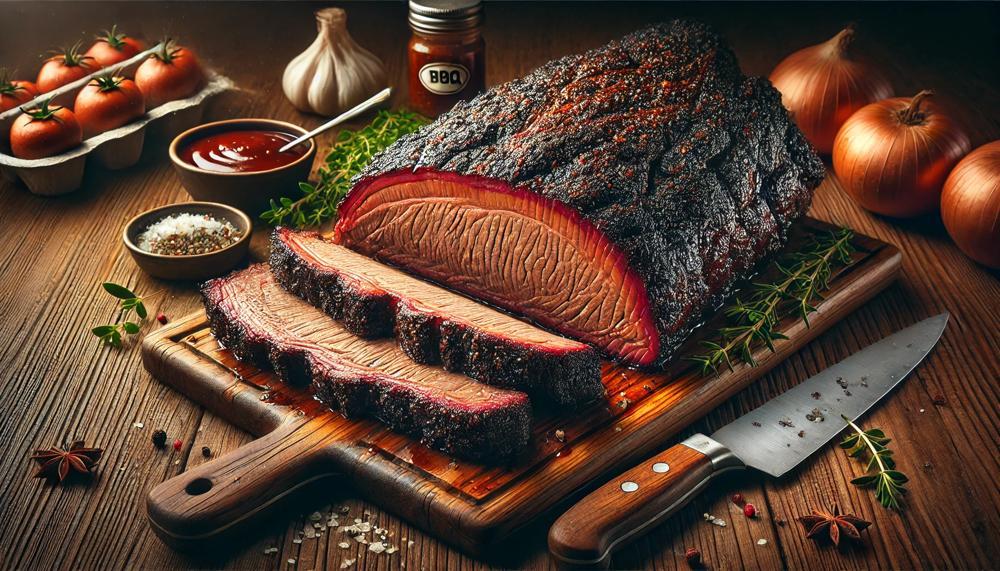
Here are some simple and effective tips for managing a brisket that finishes cooking earlier than expected during a barbecue:
- Wrap and Rest Method: Wrap the brisket tightly in butcher paper or foil to retain heat and moisture. Then, place it in an empty cooler or a faux Cambro (a food storage box) lined with towels to keep it warm for several hours until serving time. This method helps maintain tenderness without further cooking the meat.
- Low Oven Technique: If you prefer using an oven, set it to the lowest possible temperature (around 150-170°F or 65-75°C). Wrap the brisket in foil and place it on a baking tray inside the oven. This keeps the brisket warm and prevents it from drying out for up to 8 hours.
- Monitor Internal Temperature: Continuously check the internal temperature of the brisket with a meat thermometer. Once it reaches the desired doneness (typically around 195-205°F or 90-95°C for brisket), remove it from the smoker or grill promptly to avoid overcooking.
- Resting Period: Allow the brisket to rest for at least an hour before slicing or serving. This resting period allows the juices to redistribute within the meat, ensuring a moist and flavorful result.
These methods ensure your brisket remains tender and delicious, even if it finishes cooking earlier than expected.
Conclusion
When brisket finishes early, it’s not the end of the barbecue—it’s an opportunity to master the art of temperature control and moisture retention. Think of your brisket as a fine wine in a decanter; it needs a careful balance of environment and time to reach its peak. Wrapping your brisket and placing it in a faux Cambro or low oven acts like a slow simmer of flavors, gently melding and enriching the meat’s tender texture.
Maintaining the brisket’s warmth and juiciness involves wrapping it securely to trap heat and moisture. A low oven or cooler can serve as your brisket’s sanctuary, ensuring it stays perfectly warm without advancing towards dryness. Regular temperature checks play a crucial role, acting as your compass in this journey, guiding you to keep the brisket within the ideal temperature range for serving.
Furthermore, brisket that finishes early presents a unique chance to transform part of it into delicious burnt ends—a treat that promises to elevate your barbecue from memorable to legendary. This approach ensures that every piece of brisket, whether served immediately or hours later, maintains a mouth-watering appeal, delivering a feast that is both satisfying and delectably juicy.

